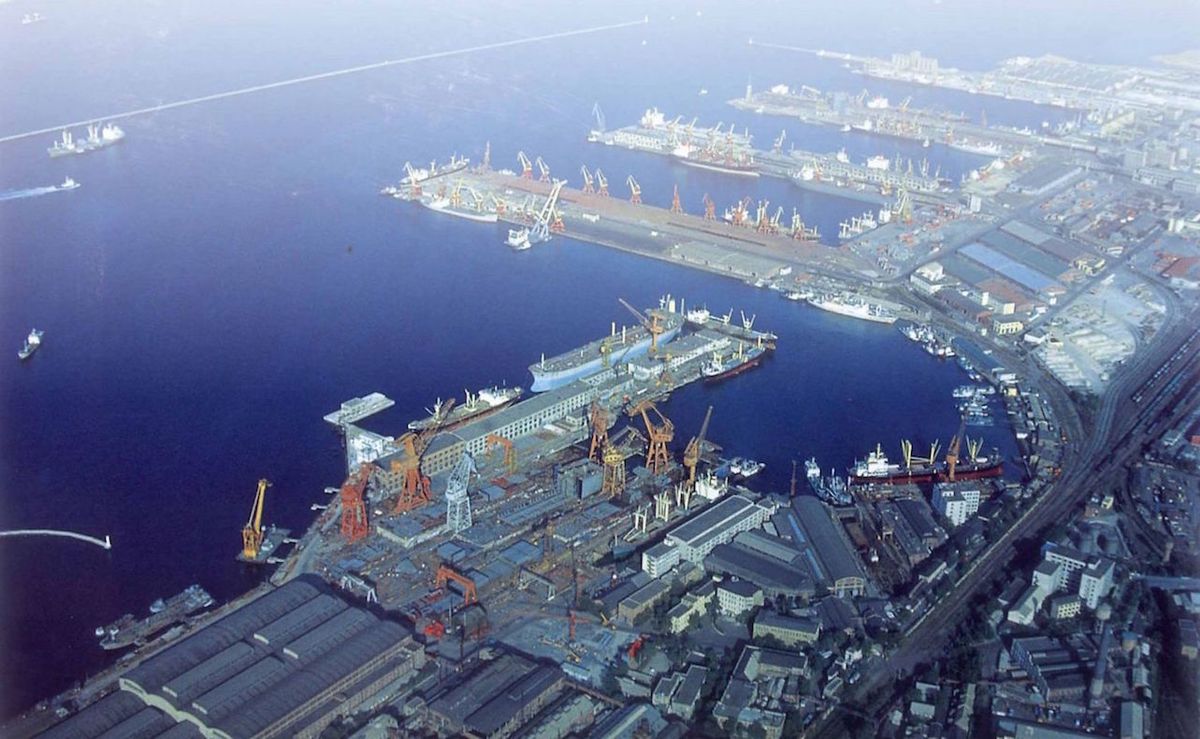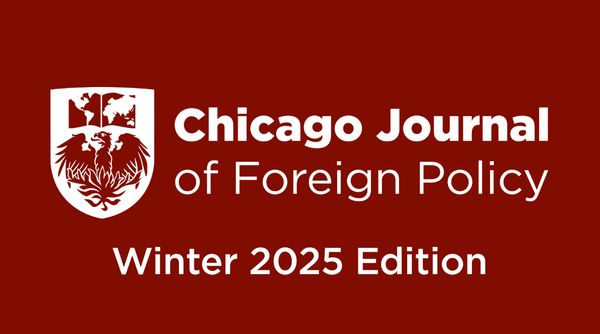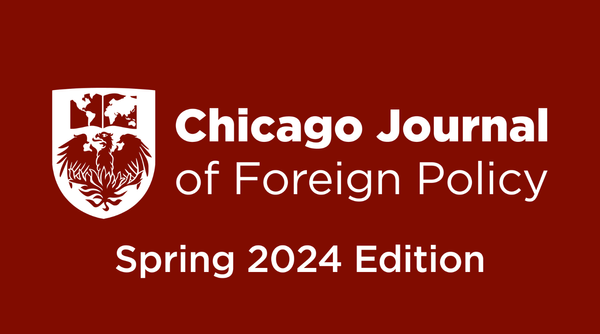The United States is Undermining the WTO it Built to Advantage Itself

by JOSHUA ZAKHAROV, ’20
The big engine that just barely couldn’t. On June 8th, the Peak Pegasus, a U.S. cargo vessel carrying a shipment of soybeans, embarked from Seattle on a one-month voyage to the Chinese port of Dalian. On its way, however, the Peak Pegasus caught word of China’s retaliatory 25% soybean tariffs on the United States, which would only affect the Peak Pegasus if it arrived in China after the deadline for the tariffs had set – 5:00 PM on Friday, July 6th. The vessel made it to Dalian, at the end of its month of pushing to beat the deadline, at 5:30, half an hour late.[1]
These retaliatory tariffs from China – a response to the initial American tariffs of $34 billion on Chinese goods – marked another volley in our trade war with China. The trade war escalated that month, with the United States announcing an additional $200 billion in tariffs on Chinese goods (in retaliation to their retaliatory tariffs to our tariffs), an official Chinese complaint to the World Trade Organization, and an official United States complaint in the WTO about China’s retaliatory tariffs. The initial $34 billion in tariffs by the United States, however, wasn’t sanctioned by the WTO but was a unilateral move in defiance of an institution that the United States helped to create, that privileges it, and sustains global trade. The United States would be wise to use it.
So what is this trade war about, and why did we tariff China in the first place?
The administration has two primary arguments – the first is that our trade deficit with China disadvantages American producers; we import far more from China than we export back to them. That is what a trade deficit means – not necessarily that we are “losing money,” but that we are buying more from someone than they are buying from us. This argument has little economic merit. Even disregarding that the trade gap has been narrowing considerably (in that, for example, our exports to China have exploded by 542% in the last decade compared to exports to China from the rest of the world increasing by only 80%) and is forecasted to narrow further as China’s middle class grows and demands more imports; and even looking past that our net global exports are more than $500 billion more than China’s; few economists stake out the position that trade deficits are actually a bad thing.[2] Derek Scissors of the Heritage Foundation argues for example, that a rising share of imports is a sign of strong wages and a healthy economy; as such, higher levels of imports are often associated with higher salaries and lower unemployment.[3] Daniel Griswold of the Cato Institute observed a similar effect on a more macro level, finding that in years in which the trade deficit expanded rather than contracted, the economy has grown 40% faster, factory employment actually increased on average by 13,100 workers, and domestic output grew by 8.6%.[4] The logic behind this is straightforward – the trade deficit grows during periods when Americans save less and invest more, suggesting that trade deficits are good indicators of economic expansion.
As John Cochrane of the Cato Institute puts it, drawing on the economic principle of comparative advantage,
“Think of it this way: You run a huge ‘trade deficit’ with the grocery store. Why not grow your own food? Well, you’re not very good at growing food. And if you do, the grocer will not have money to buy what you make, or to give to the bank to fund your mortgage.”[5]
The second argument the administration makes, however, does have some merit, and concerns the non-tariff barriers that China has been levying against the United States and exporters around the world. The primary of these is “forced technology transfers,” or offsets. Offsets require foreign firms seeking access to Chinese markets to turn over their intellectual property and technology by forming joint ventures with local entities; in the words of the Economic Policy Institute, they “demand a transfer of technology and/or production in return for a sale.”[6] China’s policy of technology transfers, according to Fatih Oktay of the Diplomat, began in 1983 in the automobile industry; foreign auto companies doing business in China would have to form 50-50 JVs with local Chinese firms, and in doing so, give those firms access to their intellectual property.[7] Today, though technology transfers are prevalent in most Chinese industries, they are especially noteworthy in the aerospace industry (a reason why the Trump administration’s first round of tariffs focused on mechanical equipment, technology, and airplane parts). The Economic Policy Institute finds that Boeing’s and Airbus’ intellectual property, for instance, after they sought to sell hundreds of planes to China, has reached over 240 Chinese companies, increased the productivity of China’s aerospace industry by over $1.5 billion, sustained 500,000 Chinese jobs, and helped China Eastern, China Southern, and Air China become three of the largest airlines in the world.[8] Technology transfers are one of a set of admittedly unfair intellectual property-related practices by China. In all, former Director of National Intelligence Dennis Blair and former Director of the National Security Agency Keith Alexander estimate that both formal and informal intellectual property theft as a trade policy costs the United States over $600 billion a year, most of which China accounts for.[9]
China’s pursuit of offsets gives the United States an opportunity to invoke an act rarely touched since the World Trade Organization’s start – Section 301 of the U.S. Trade Act of 1974, which allows the President to take any appropriate response, including retaliation, against trade policies of another nation that it feels to be flouting international law. The act that Section 301 tariffs come from – the Trade Act of 1974 – predates the WTO by decades, and since the WTO’s founding, presidents have increasingly relied upon it for recourse rather than the antiquated statute. The World Trade Organization was built for claims like this – certainly more so than unilaterally executed Section 301 retaliatory tariffs were.
That’s because as a condition of joining the WTO, all member nations agree to litigate trade disputes through the WTO’s Dispute Settlement Body (DSB) rather than through their domestic governments. With over 500 disputes resolved since the system’s initiation in 1995, the DSB is the most active multilateral dispute resolution mechanism of its size. States against whom a complaint about unfair trade policies is successfully litigated in the DSS are given no more than 15 months to comply with the WTO’s decision. Should the state not comply in time, it can either negotiate appropriate compensation for its trade policies with the state that issued the complaint, or the WTO can grant permission to the state that lodged the complaint to retaliate in a measured, internationally agreed-upon way.
Even beyond the institutional mechanisms of the WTO, the institution itself was designed in ways that tip its scales towards the United States and Europe. To understand how, we need to go back to the talks that spawned the WTO – the Uruguay Round. The Uruguay Round was a series of negotiations to update the General Agreement on Tariffs and Trade (GATT), originally signed in Bretton Woods, New Hampshire, in 1947. In Uruguay Round negotiations, the “G2” – the European Union and the United States – were interested in pushing both the formation of the WTO and a number of new agreements at the same time: TRIPs (Trade Related aspects of Intellectual Property Rights) and TRIMs (Trade-Related Investment Measures), and GATS (General Agreement on Trade in Services). All of these would offer the developed world enormous advantages in intellectual property, information technology, and services. Richard Steinberg writes that “since the beginning of the Uruguay Round negotiations, most developing countries – including China – had stated their intention not to sign on to the agreements on TRIPs, TRIMs, or [GATS],” the three of which the United States and Europe considered critical to their interests.[10] The US opted to push for what they called the “power play” to “force the developing countries to accept the obligations of all the Uruguay Round” – essentially leave the GATT, terminate their obligations to it, start the WTO with Europe (complete with TRIPs, TRIMs, and GATS), and wait for the developing world to join (or stand to lose access to its massive markets).
The power play worked. World Bank economist J. Michael Finger has described this outcome as “unbalanced” in favor of the U.S. and the developed world, even “mercantilist” towards developing nations; it allowed the developed world unprecedented access to purchasing from developing nations while saddling them with costly-to-implement regulations.[11] Finger deems the developed world’s extraction of these “unrequited” concessions from the global South as having “straddled the divide between mercantilist economics and real economics in a way bad for the South.”
The WTO continues to privilege the United States. The massive leverage that the United States wields over developing nations in terms of its purchasing power and access to its markets continues to saddle developing nations with the fear of another “power play” in trade negotiations. Trade agreements the United States signs also consistently “require more liberalization… [and] much bigger tariff cuts from other countries than they do from the United States,” according to Caroline Freund of the Peterson Institute, who finds that the U.S. has hardly adjusted its (relatively low) tariff levels since the 1940s.[12]
This means that the U.S. often wins in WTO disputes and is able to shape trade deals largely to its liking. Even the Council of Economic Advisors’ report this year cites Mayen, 2017, who finds that the “United States has won 85.7 percent of the cases it has initiated before the WTO since 1995, compared with a global average of 84.4 percent. In contrast, China’s success rate is just 66.7 percent,” and China has “only won 5.3% of cases initiated against it.” This isn’t limited to China – according to Chad Brown of Brandeis University, there is a significant imbalance our success rates and those of the rest of the developing world. It makes sense, to be sure, that the developing world (with fewer resources to monitor trade infractions, greater need to protect some nascent industries, and vastly less money with which to fund legal proceedings), would be found violating principles that it had little input in. Provisions like this, our success at arbitration, our vast economic leverage, and agreements dating to the Uruguay Round suggest that the WTO has played a valuable role for the United States in pushing trade liberalization onto the developing world with a great measure of success. Ultimately, according to the Peterson Institute, the payoff to the United States alone from trade expansion driven by the GATT and the WTO stands at over $2 trillion, and will only grow if liberal institutions do as well.
So pursuing tariffs at a potentially great cost to the American economy certainly seems a worse option than pursuing recourse through the institutional mechanisms that the United States designed to advantage specifically itself. The costs of tariffs are hardly in dispute. An oft-cited study commissioned by the Consumer Technology Association and the National Retail Federation this May found that the net impact of the first round of tariffs and their retaliation by China would drop United States economic output by $3 billion and cost 134,000 jobs.[13] Chinese retaliation would put immense pressure on our agriculture industry, as China is a key agricultural importer of the United States; from the first round alone, farmers would see their wages depressed by 6.7%, and 67,000 agriculture jobs would be lost. The same study found that if the United States were to retaliate with an additional $100 billion in tariffs, farmer income would drop by 15%, 181,000 agriculture jobs would be lost, overall American output would drop by $49 billion, and 455,000 jobs for less-skilled workers on net would be lost. We retaliated with $200 billion in tariffs.
Considering the wide-reaching costs of a trade war county-by-county, industry-by-industry, the Brookings Institution finds that more than 2.1 million jobs would be affected (81% of which are in counties that voted for President Trump).[14] The logic behind the costs is quite simple. Tariffs on foreign machine parts make it far more difficult for manufacturers in the United States to operate here and access cheap parts that they need for their products, be they cars, energy infrastructure, airplanes, refrigerators, etc. Those manufacturers can only do two things – move their business out of the United States to dodge the tariffs, or hike prices on consumers, which gives Americans less disposable income and spikes inflation. Neither of those is desirable. Tariffs from China on domestic agriculture cost American farmers one of the largest markets for their produce, make their goods less internationally competitive, and will give them one less avenue to sell off their consistent surplus of goods.
But suppose that pursuing recompense through the WTO or through Section 301 tariffs were equally effective or equally costly. Even then, there are powerful reasons to prefer the WTO. \With the United States absent from the WTO, as former EU Ambassador Stuart Eizenstat argues, we lose the most favored nation (MFN) status that has been a boon for American trade for so long.[15] A country receiving MFN status from another is accorded the best possible trade policies that the country granting MFN status offers any other; signatories to the WTO, with limited exceptions, all offer one another MFN status. Should we lose this, Eizenstat writes that other countries will be free to retaliate against American tariffs as they like and turn to other massive emerging markets (Brazil, China, India, and so on) as a substitute. The Peterson Institute has found that total withdrawal from the WTO could eliminate 5 million export-supported American jobs, and by denying Americans access to low-cost imports could take $10,000 in purchasing power away from American households on average.[16] Coupled with our recent behavior in unilateral tariffs against China, the New York Times has found that the United States has consistently and deliberately sought to undermine the WTO in a multitude of ways, including delaying appointments of judges to the DSB and slowing down its own cases, likely to demonstrate WTO inefficiency to make an exit more palatable. This is, suffice it to say, not in the United States’ best interest.[17]
The U.S. has historically used the WTO as an extraordinarily effective cudgel against the developing world to compel their liberalization, often in a way that, if anything, is unfair to nascent industries and cash-strapped governments in developing countries. For us to turn around and say that it is unfair to the United States seems misguided. Ultimately, when faced with China’s admittedly illiberal trade practices, the U.S. had two options. Option one – demonstrate at least a nominal commitment to international law by using an institution it built, in which it enjoys structural advantages, and earn the respect of the international community for doing so. Option two – flout that institution, anger its other 163 members, cost hundreds of thousands of American jobs, and possibly cost President Trump his next election. Why did we pick option two?
Works Cited
[1] Sykes, Michael. “U.S. Soybean Ship Couldn’t Beat Tariffs in Race to China.” Axios, 6 July 2018, www.axios.com/soybean-ship-china-tariffs-trade-war-2414c2f5-ccf3-4e6f-b3fa-a5dab39767e4.html?utm_source=newsletter&utm_medium=email&utm_campaign=newsletter_axiospm&stream=top.
[2]“US-China Trade Agenda.” US China Business Council, 12 May 2014, www.uschina.org/reports/us-china-trade-agenda.
[3]Scissors, Derek. “Trade Freedom: How Imports Support U.S. Jobs.” The Heritage Foundation, 11 Sept. 2012, www.heritage.org/trade/report/trade-freedom-how-imports-support-us-jobs.
[4] https://www.cato.org/publications/congressional-testimony/us-trade-deficit-sign-good-times
[5]Cochrane, John H. “Trump’s Tariffs Will Hurt Trade, and Trade Is a Good Thing — Really.” Cato Institute, 6 Mar. 2018, www.cato.org/publications/commentary/trumps-tariffs-will-hurt-trade-trade-good-thing-really.
[6]Herrnstadt, Owen. “Eliminating the Forced Transfer of Technology and Production to China Is Critical.” Economic Policy Institute, 24 Apr. 2018, www.epi.org/blog/for-tariffs-to-be-effective-eliminating-the-forced-transfer-of-technology-and-production-to-china-is-critical/.
[7]Oktay, Fatih. “Do the Chinese Government’s Technology Transfer Policies Even Work?” The Diplomat, The Diplomat, 20 Apr. 2018, thediplomat.com/2018/04/do-the-chinese-governments-technology-transfer-policies-even-work/.
[8] Oktay, “Do the Chinese Government’s Technology Transfer Policies Even Work?”
[9] Blair, Dennis C., and Keith Alexander. “China’s Intellectual Property Theft Must Stop.” The New York Times, The New York Times, 15 Aug. 2017, www.nytimes.com/2017/08/15/opinion/china-us-intellectual-property-trump.html.
[10]Steinberg, Richard H. “In the Shadow of Law or Power? Consensus-Based Bargaining and Outcomes in the GATT/WTO.” International Organization, vol. 56, no. 2, 2002, pp. 339–374. JSTOR, JSTOR, www.jstor.org/stable/3078608.
[11]Finger, J. Michael, and Julio J. Nogues. “The Unbalanced Uruguay Round Outcome: The New Areas in Future WTO Negotiations.” Policy Research Working Papers, World Bank, Dec. 2001, elibrary.worldbank.org/doi/abs/10.1596/1813-9450-2732.
[12]Freund, Caroline. “The United States Wins from Trade Agreements.” Peterson Institute for International Economics, 19 Dec. 2017, piie.com/blogs/trade-investment-policy-watch/united-states-wins-trade-agreements.
[13]Niquette, Mark. “Trump’s China Tariffs Risk Costing U.S. Jobs, Study Says.” Bloomberg, Bloomberg, 1 May 2018, www.bloomberg.com/news/articles/2018-05-01/trump-s-china-tariffs-risk-costing-u-s-jobs-new-study-shows.
[14]Muro, Mark, et al. “How China’s Proposed Tariffs Could Affect U.S. Workers and Industries.” Brookings Institution, Brookings, 20 Apr. 2018, www.brookings.edu/blog/the-avenue/2018/04/09/how-chinas-tariffs-could-affect-u-s-workers-and-industries/.
[15]Eizenstat, Stuart, and Anne Pence. “The WTO Is Not a Disaster, Mr. President. But Leaving It Would Be.” The Hill, The Hill, 18 Apr. 2017, thehill.com/blogs/pundits-blog/economy-budget/329241-for-the-sake-of-us-workers-trump-should-show-wto-more-respect.
[16] Eizenstat and Pence, “The WTO Is Not a Disaster, Mr. President. But Leaving It Would Be.”
[17] Swanson, Ana. “Once the W.T.O.’s Biggest Supporter, U.S. Is Its Biggest Skeptic.” The New York Times, The New York Times, 10 Dec. 2017, www.nytimes.com/2017/12/10/business/wto-united-states-trade.html.





